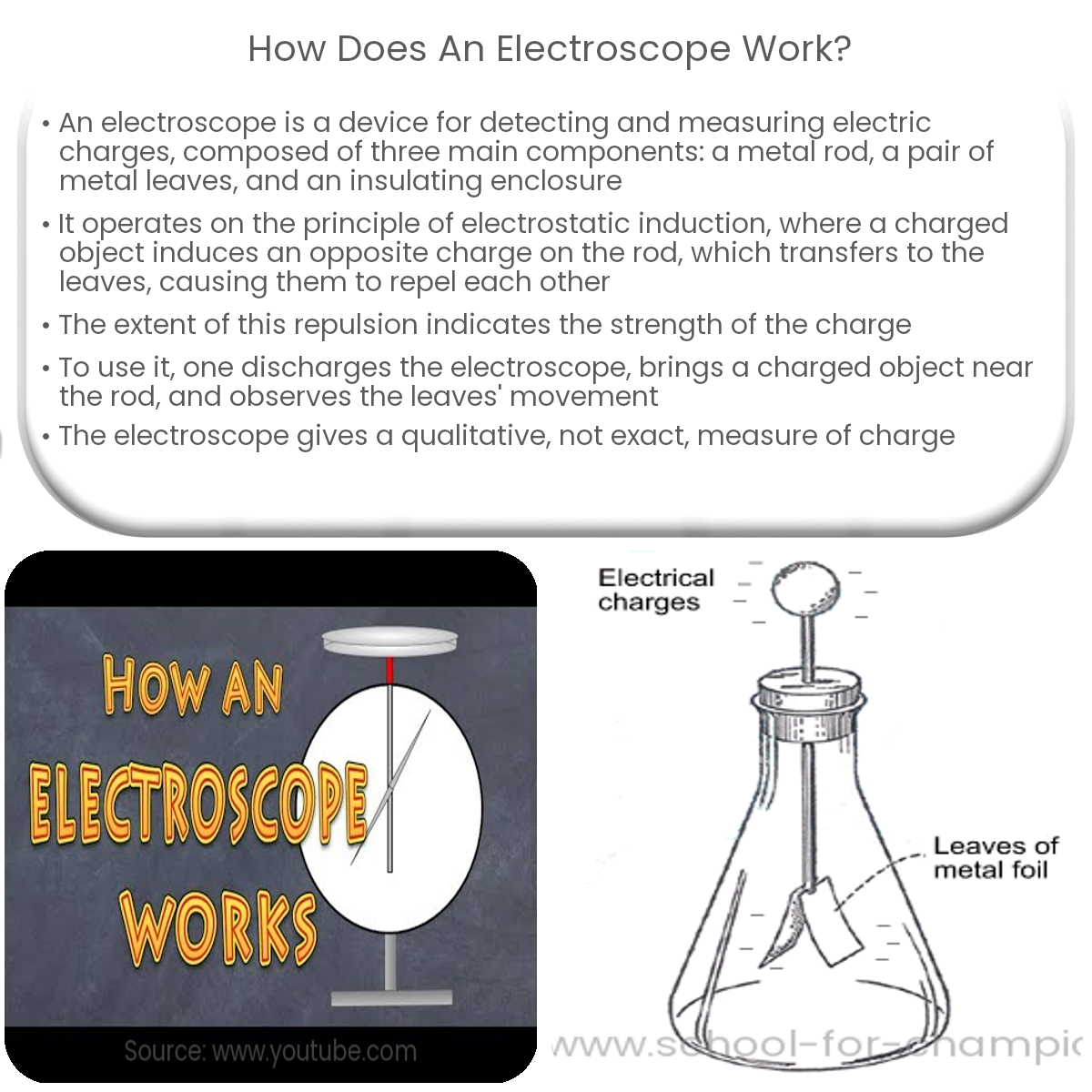An electroscope detects electric charges by using electrostatic induction, causing metal leaves to spread apart based on the charge’s strength.
How Does an Electroscope Work?
An electroscope is a simple device used for detecting and measuring the presence of electric charges on objects or surfaces. In this article, we will discuss the basic principles of how an electroscope works and the main components involved in its operation.
Components of an Electroscope
Most electroscopes consist of three primary components:
- A metal rod, often made of brass or copper, which serves as the conductor.
- A pair of metal leaves, usually gold or aluminum, which are attached to the bottom of the rod and hang freely within the device.
- An insulating enclosure, typically made of glass, that houses the metal rod and leaves, preventing external electric fields from interfering with the measurements.
Principles of Operation
An electroscope works on the principle of electrostatic induction. When an object with an electric charge is brought near the metal rod, the charge induces an opposite charge on the surface of the rod. This induced charge is transferred down the rod to the metal leaves, causing them to repel each other and spread apart. The greater the charge on the object, the more the leaves will repel and the wider they will spread. This movement of the leaves can be observed through the glass enclosure, providing a visual indication of the presence and strength of the electric charge.
Using an Electroscope
There are several ways to use an electroscope, but the most common method involves the following steps:
- Ensure the electroscope is in a neutral state by discharging it, which can be done by touching the metal rod with a grounded object or your finger.
- Bring the charged object near the metal rod without touching it. The metal leaves will begin to spread apart due to the induced charge.
- Observe the movement of the leaves, which indicates the presence of an electric charge on the object. If the leaves do not move, the object is likely neutral or has a very weak charge.
It is important to note that an electroscope does not provide an exact measurement of the electric charge, but rather a qualitative indication of its presence and relative strength. By observing the behavior of the leaves, one can deduce the type and magnitude of the charge on the object being tested.


